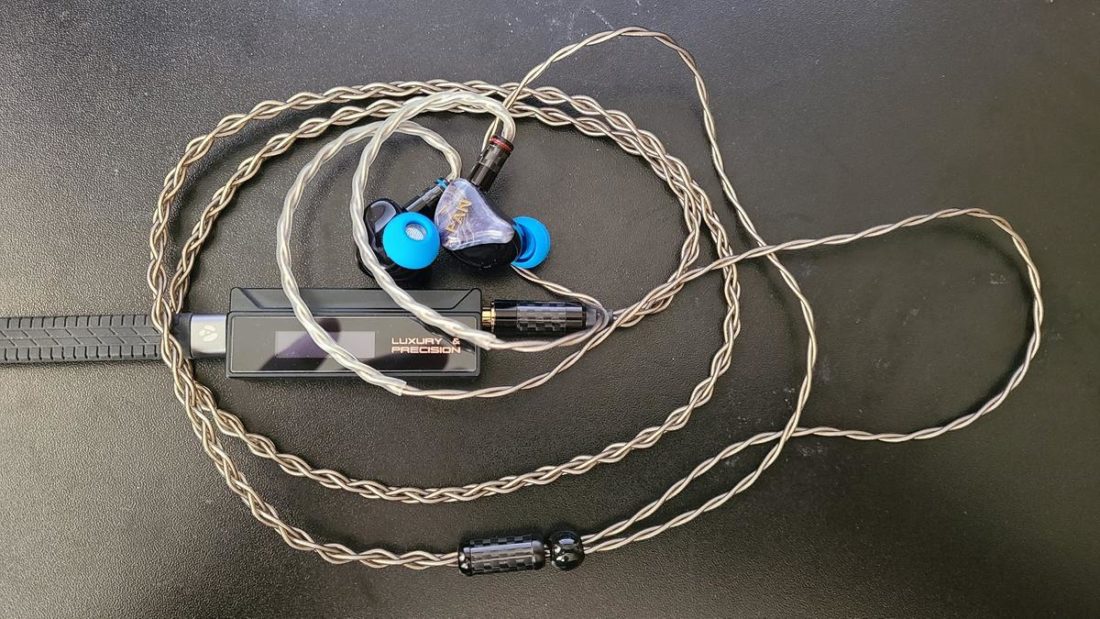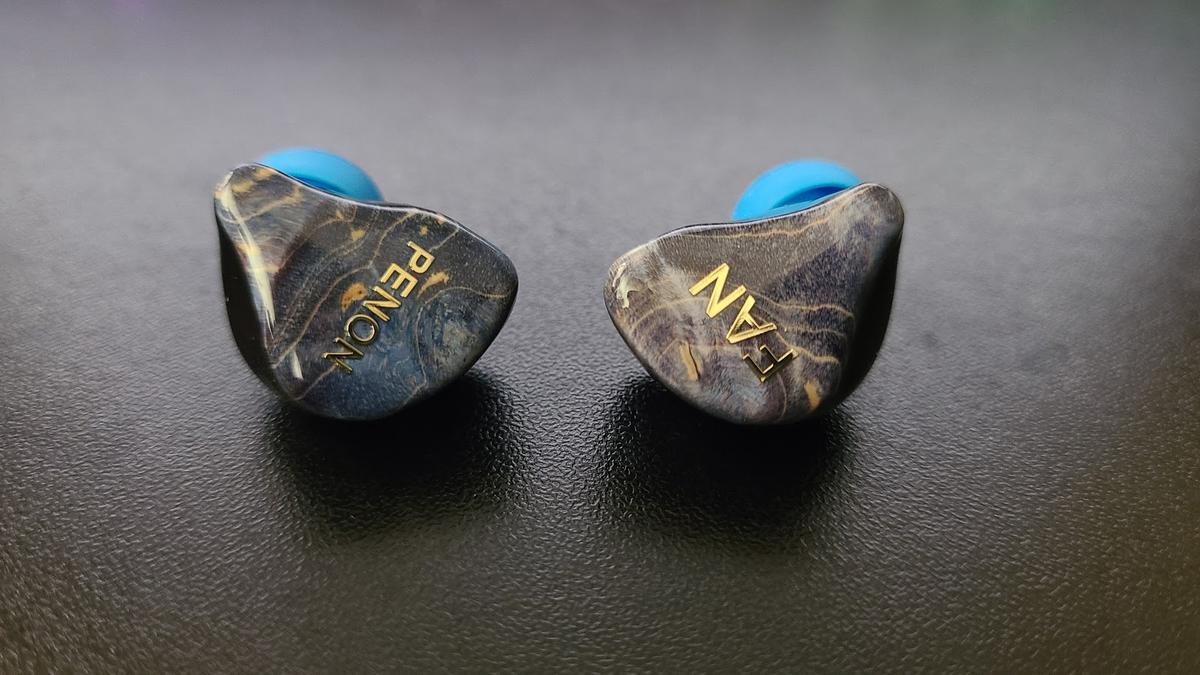Vibing with the warmth.
Penon Audio started with making hi-fi products in the mid to late 2010s. Their first IEMs, the generically named Penon Audio IEM, have been highly praised. Although sadly, I haven’t tried them.
In November 2020, Penon Audio released their greatest IEMs to date, the Volt. They contain four electrostatic drivers, two balanced armatures, and one dynamic driver. Another set of IEMs, the Fan, were released shortly in January 2021 in the sub-$200 price bracket.
After I received the Fan earlier this year, and I have listened to them quite often. In this review, you will see why.
- Detailed and natural sound
- Performs best with bass-heavy tracks
- Good mids
- Great imaging
- Treble carries a good amount of air
- A lot of ear tips
- Chin slider is a bit too loose
- Upper treble roll-off
- The carrying case started to fray after a couple of months
- Lack of cable and plug options
Company Overview
From 2013, Penon Audio’s goal was to sell its audio products to audiophiles and business users at an affordable price. What makes Penon Audio different from other online stores is its specialization in audio and hi-fi gear. Penon Audio’s staff are capable of answering detailed questions, and they can make appropriate recommendations from their inventory.
Technical Specifications
- Form: IEM
- Drivers: 1 x 10mm Dynamic Driver
- Impedance (Ohm): 23Ω
- Sensitivity (dB): 102dB
- Frequency Response (Hz): 20Hz – 20kHz
- Removable Cable: Y
- Source Jack: 3.5mm TRS
- Cup/Shell Jack: 0.78mm 2-pin
- Mic: N
Packaging
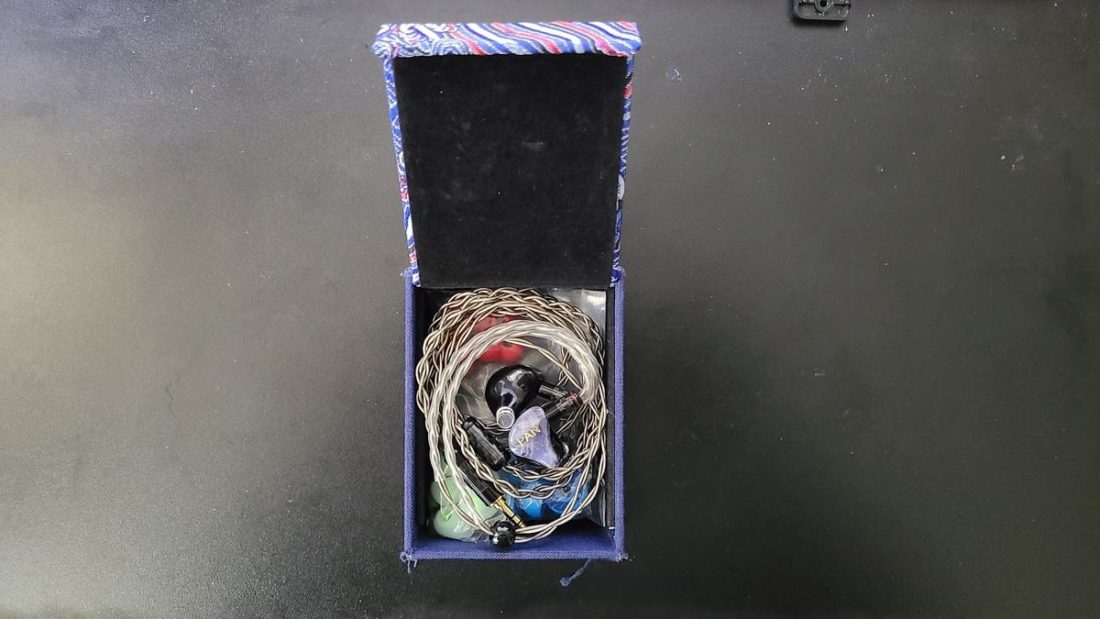
Beginning with one of my favorite categories, the packaging.
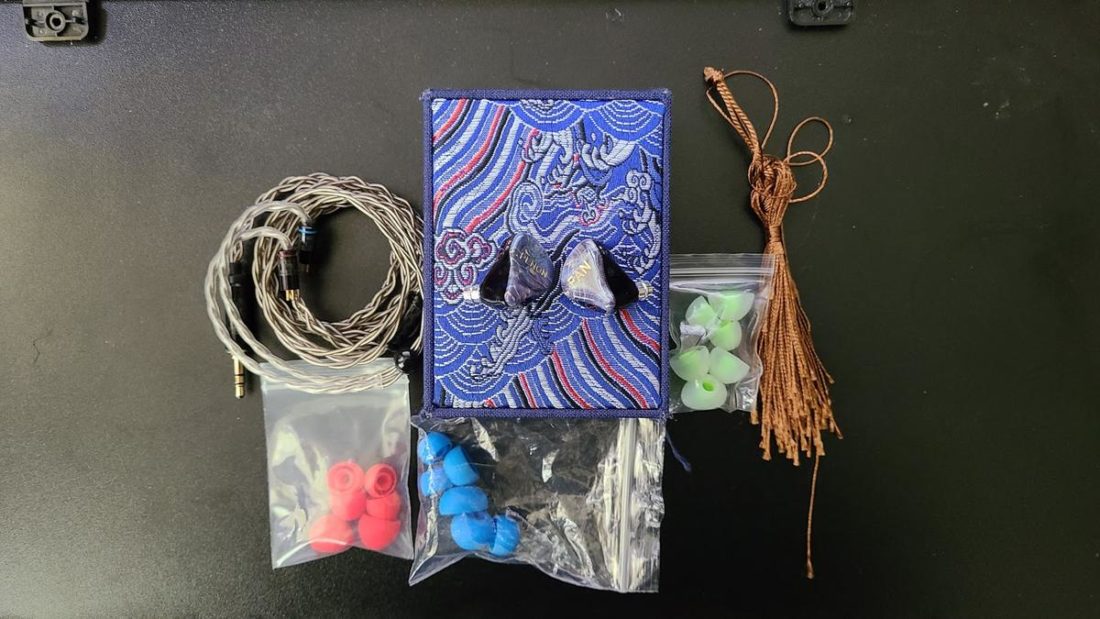
After owning the Fan for a couple of months, the carrying case started to fray, and eventually, the tassel fell off. I regret not taking photos of the carrying case sooner. It was a sight to behold, an actual piece of art.
Oh! One more thing I forgot to mention. I love the cushioned flap of the carrying case. It feels so soft to the touch. Kudos to Penon Audio for designing such a woven beauty.
In the box
- A spectacularly woven carrying case
- 3 pairs of red ear tips
- 3 pairs of blue ear tips
- 3 pairs of clear/lime green ear tips
- Fan IEMs
- A removable 0.78mm 2-pin cable
Cable
At first glance, I thought this was one of Penon Audio’s aftermarket removable cables. After further inspection and referencing their website, it appears it is not. It is a custom cable made by Penon Audio only available for the Fan.
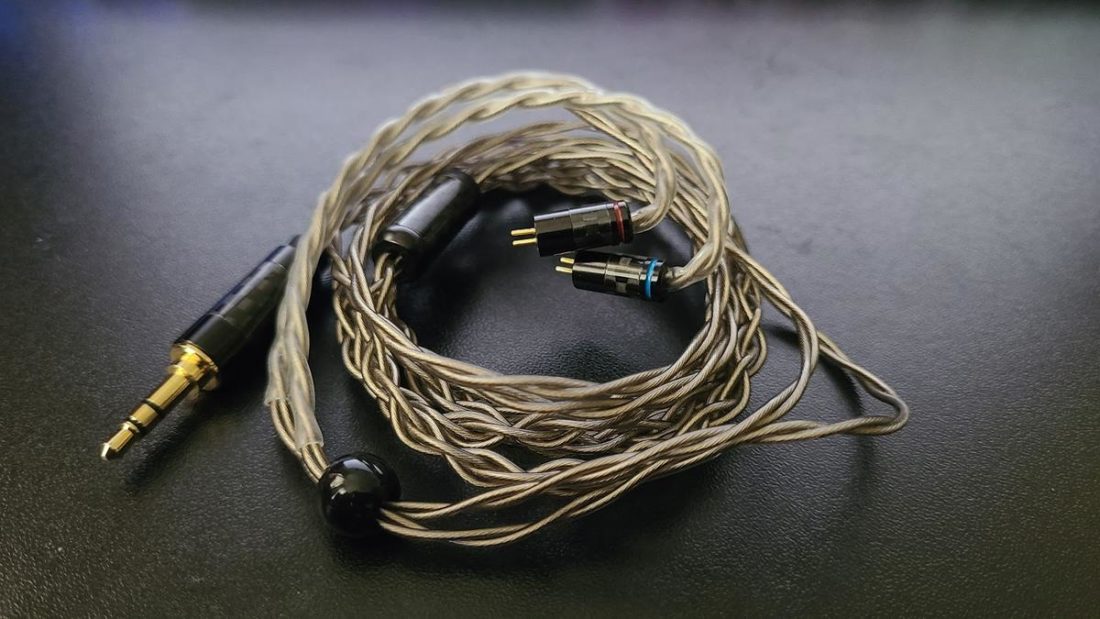
I don’t mind because the stock cable is well designed, except for the chin slider’s one minor flaw. I like the bead-shaped slider, but it’s too loose and slides down the split cables relatively easily.
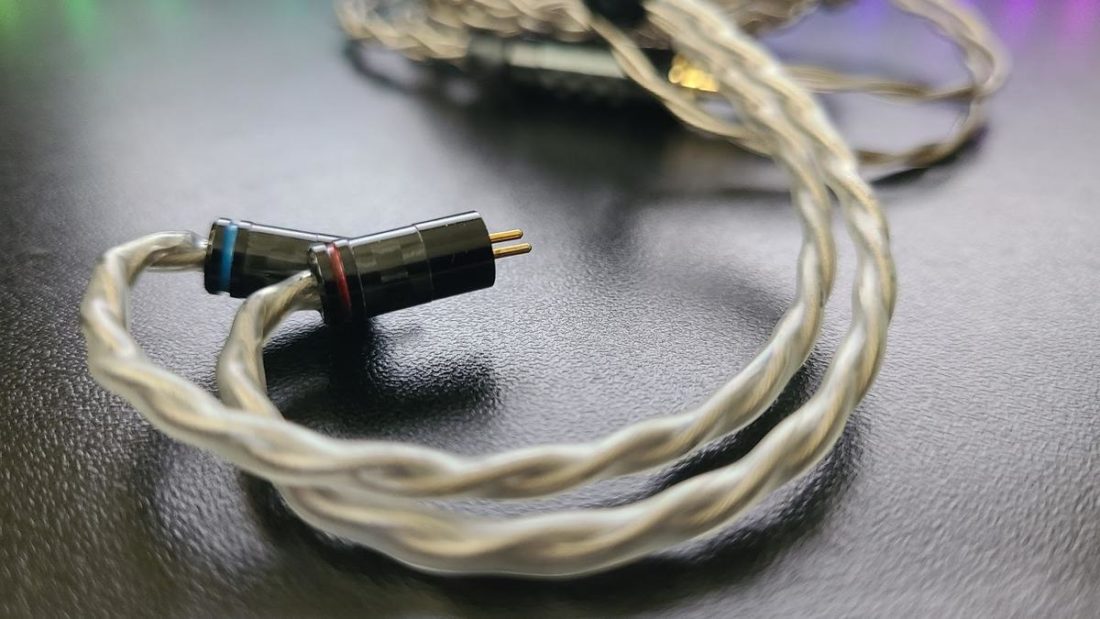
What I like most about the stock removable cable is the carbon fiber pattern on the connectors and plugs. They have such a fascinating charm to them that makes it hard to look away.
Design
The shells are 3-D printed and the faceplates are made out of stabilized wood.
The Fan has a semi-custom shell design, with a peculiar vent in the back of each shell. The function of these vents is unknown. However, the faceplates are gorgeous. It’s like looking at glossy marble flooring with the golden words “Penon” on the left and “Fan” on the right shell. They are made to look classy and built to last.

Comfort
The Fan are so lightweight, it feels like there’s nothing at all in your ears.
These are the most comfortable IEMs I have ever tried. Seriously, no joke. I can wear these for hours and hours, and I don’t feel any discomfort at all. I used the blue wide bore medium-sized stock ear tips, and they feel pretty soft in my ear canals. Along with comfort comes the secure fit of the Fan. They won’t fall out of your ears at all.
Internals
I have researched the Fan, but I couldn’t find anything unique about the internals. The Fan comes with a 10mm dynamic driver. That’s all there is. I asked the owner of Penon Audio, and he didn’t go into detail about the internals.
Penon Audio Fan’s Sound
The Fan sounds warm and nearly balanced, with a slight bass tilt. Not only that, the Fan is quite easy to drive. I paired my Samsung Galaxy 5G with the Luxury Precision W2 Portable USB DAC/AMP Headphone AMP, and I didn’t even have to turn the volume up past 50%.
Equipment used:
- Samsung Galaxy S20 5G w/Luxury Precision W2 Portable USB DAC/AMP Headphone AMP
- 50 Hours of burn-in
- Tidal (Hi-Fi Quality)
- “Just B Friends” by Pholo, Dyzphoria (Wave), and “Mist” by Ennja (Wave) for Bass
- “Star Sky” by Two Steps From Hell (Epic Scores) for Mids
- “Black Diamond” by The Rippingtons, Russ Freeman (Modern Jazz) for Treble
Bass
Solid and punchy bass!
The Fan will get you romping on the dance floor with bass-heavy dance tracks. Now, why is that so? Well, it’s because of the Fan’s pulsing bass. The bass is moderate in quantity but extends rather deep. There is a noticeable mid-bass hump that gives that extra “oomph!” but doesn’t interfere with the mids. Overall, I find the texture to be smooth and the tonality to be warm.
As for attack and decay, it’s not nimble, but it’s not sluggish either. It’s just right. The average speed prevents the bass from intruding into the mids and perfectly blends into the sound mix.
I’ve noticed vibing bass while listening to “Just B Friends” by Pholo, Dyzphoria (Wave), and even more so with “Mist” by Ennja (Wave). The bass exudes from the center and simulates the feeling of weak seismic energy from both soundtracks. This adds a nice layer of warmth to everything it touches, but not enough to intrude on the vocals.
Midrange
The midrange is smooth with a hint of crispiness.
I like my mids like I like my salad, organic with a bit of crispiness, and the Fan gets a thumbs-up for that. The Fan does sound natural and warm, but with a hint of dryness present within the midrange. As a result, the tonality of the mids is more suited to guitars, hi-hats, drums, and other percussion instruments. That slight crisp tone provides a more authentic sounding experience.
These qualities were observed in “Star Sky” by Two Steps From Hell. The warmth of their singing mixed with a hint of dryness, so the vocals were not drowned out completely but did sound a bit laidback. All of the other instruments in the background popped out a little more. What stuck out most was the female lead and the strings.
Thankfully, the accuracy of the strings and vocals in that song did not take a hit from the warmth either. Perhaps the tuning of the Fan was intended to be this way. I don’t mind it. It’s pleasing and not overbearing.
Treble
The treble is nice, but I feel like it’s missing something.
Hmmm. What could the treble possibly lack? Oh! The lack of extension. I noticed this issue immediately with almost every track. It’s like there’s a hill at the upper mids and lower treble, but then there’s a steady roll-off after that.
As a result, the Fan sounds less bright than I expected in this part of the frequency range. Despite the lack of brightness, there’s still a decent amount of energy and air generated by the treble.
I’ve noticed the spacing between the center guitar, the keyboard on the left, and the guitar on the right. When I listened to “Black Diamond” by The Rippingtons and Russ Freeman, the imaging is clear enough to hear every instrument on stage and where they are located. However, the subdued treble prevents the imaging from achieving a more vivid presence.
Where to Buy
Conclusion
The mix of the Fan’s sound is what I enjoy most. Over only a few years, Penon Audio has made IEMs that are not only competitive in price but also in value. The Fan feel and sound like experienced engineers made them. They look great and their sound is detailed and natural.
Overall, I highly recommend the Fan to those seeking solid bass, natural mids, and relaxed treble; these IEMs are certainly for you.
